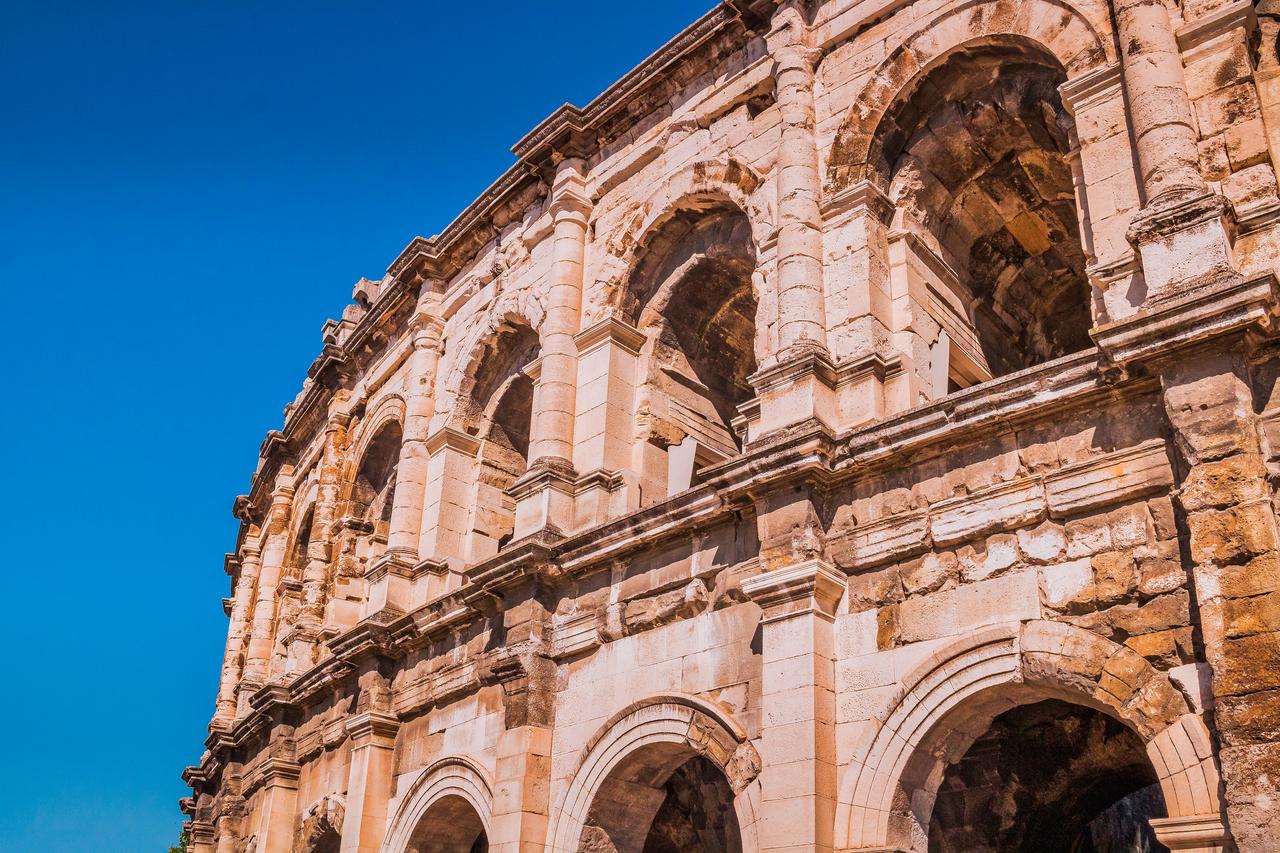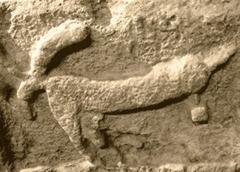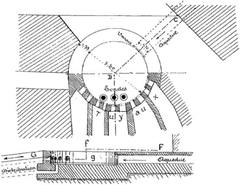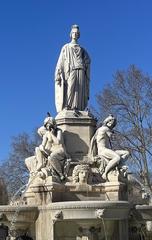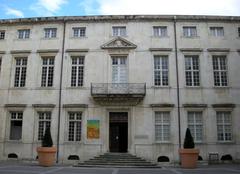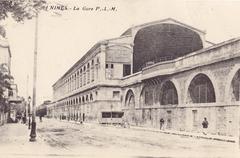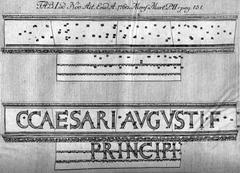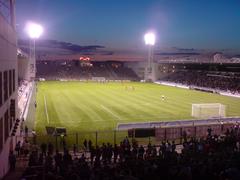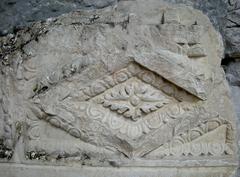Comprehensive Guide to Visiting Nîmes, Gard, France
Date: 13/08/2024
Captivating Introduction
Welcome to Nîmes, a city where time itself seems to stand still, offering a mesmerizing blend of ancient Roman grandeur and modern French charm. Often referred to as the “French Rome,” Nîmes is a treasure trove of history, with roots tracing back to its origins as a Celtic settlement around 500 BC. Imagine walking through streets where once a sacred spring, dedicated to the local deity Nemausus, was the lifeblood of the city. This very spring became central to the Roman infrastructure that would later shape Nîmes (Britannica).
As you step into Nîmes, you are immediately greeted by the colossal Les Arènes de Nîmes, a Roman amphitheater that has withstood the test of time and continues to host concerts and bullfights, echoing the cheers of 24,000 spectators from centuries past (TripUSAFrance). Nearby, the Maison Carrée stands as a testament to Roman architectural brilliance, its Corinthian columns, and detailed reliefs offering a glimpse into the grandeur of ancient temples (Simply France).
Nîmes is not just about its Roman legacy. The city has seamlessly woven its medieval and modern transformations into the fabric of its identity. From the Jardin de la Fontaine, a public garden that integrates Roman ruins with Baroque sculptures, to the Musée de la Romanité, a modern museum offering panoramic views of the city, Nîmes is a living, breathing tapestry of history and culture (France.fr).
Whether you’re wandering through the enchanting streets of Nîmes Old Town, exploring the towering Pont du Gard, or indulging in the local delicacies at Les Halles de Nîmes, this city promises an adventure that will captivate all your senses. So, lace up your walking shoes, grab your camera, and get ready to uncover the hidden gems and local secrets of Nîmes.
Table of Contents
Historical Significance of Nîmes, Gard, France
Roman Origins and Development
Nîmes, often referred to as the “French Rome,” boasts a rich history that dates back to its origins as a Celtic settlement around 500 BC. The city, originally known as Nemausus, was named after a local deity associated with a sacred spring. This spring played a crucial role in the city’s development, providing a vital water source that would later be central to its Roman infrastructure (Britannica).
In 121 BC, the Volcae Arecomici, a Celtic tribe, peacefully integrated into the Roman Empire. This transition marked the beginning of Nîmes’ transformation into a prominent Roman city. Under Emperor Augustus, Nîmes was elevated to the status of a regional capital, leading to significant urban development. The construction of one of the longest protective walls in the Roman world and a 30-mile-long aqueduct to supply water are testaments to its importance (Rick Steves).
Architectural Marvels
Les Arènes de Nîmes
One of the most iconic Roman structures in Nîmes is the Amphitheater, known as Les Arènes de Nîmes. Built in the 1st century AD, this colossal structure could accommodate up to 24,000 spectators. It was primarily used for gladiatorial contests, public spectacles, and later, bullfights and concerts. The amphitheater’s preservation and continued use highlight its architectural brilliance and cultural significance (TripUSAFrance).
Maison Carrée
Another remarkable Roman edifice is the Maison Carrée, a temple dedicated to Gaius and Lucius Caesar, the grandsons of Emperor Augustus. Constructed between 16 and 14 BC, it is one of the best-preserved Roman temples in the world. The temple’s Corinthian columns and detailed reliefs exemplify the grandeur of Roman architecture. Today, it serves as a museum, offering insights into the city’s ancient history (Simply France).
Pont du Gard
A short distance from Nîmes lies the Pont du Gard, an impressive Roman aqueduct that spans the Gardon River. This UNESCO World Heritage site, built in the 1st century AD, is a marvel of ancient engineering. It was part of a 50-kilometer-long aqueduct that supplied water to Nîmes. The Pont du Gard’s colossal arches and historical significance make it a must-visit for those interested in Roman engineering (Places and Things to Do).
Cultural and Historical Continuity
Jardin de la Fontaine
The Jardin de la Fontaine, created in the 18th century, is set around the ancient Nemausus spring. This public garden, one of the first in France, integrates Roman ruins such as the Temple of Diana and the Magne Tower. The park’s Baroque sculptures and ornate canals reflect the city’s blend of Roman and French heritage (Rick Steves).
Musée de la Romanité
The Musée de la Romanité, located opposite the Arena of Nîmes, offers a comprehensive journey through 25 centuries of history. The museum’s extensive collection of artifacts and interactive exhibits provide an engaging exploration of Nîmes’ Roman past. Visitors can enjoy panoramic views of the city from the museum’s rooftop bar, designed by architect Elizabeth de Portzamparc (France.fr).
Medieval and Modern Transformations
Medieval Occupations
Following the decline of the Roman Empire, Nîmes experienced several occupations. In the 5th century, it was plundered by the Vandals and Visigoths. Later, the Saracens occupied the city until they were driven out in 737 AD. These occupations left their mark on the city’s architecture and cultural landscape (Britannica).
Textile Industry and Urban Expansion
By the 1730s, Nîmes had become a hub for the textile industry, particularly known for producing denim (derived from “de Nîmes”). The city’s expansion during this period led to the excavation of the ancient Nemausus spring, uncovering forgotten Roman structures. This discovery prompted the creation of the Jardin de la Fontaine, integrating the ancient ruins into a public space (TripUSAFrance).
Visitor Tips
Exploring Roman Sites
To fully appreciate Nîmes’ Roman heritage, consider purchasing the Pass Romanité, which provides access to the main Roman sites and the Musée de la Romanité. This pass offers a cost-effective way to explore the city’s historical landmarks (Waves and Cobblestones).
Best Times to Visit
Nîmes’ attractions can be crowded during peak tourist season. To avoid the crowds, visit popular sites like the Arena and Maison Carrée early in the morning or late in the afternoon. Additionally, exploring the city’s attractions at different times throughout your trip allows for a more relaxed experience (Simply France).
Local Culture and Cuisine
Nîmes offers a vibrant café culture and excellent dining options. The city’s market hall, Les Halles de Nîmes, is open daily and provides a variety of local produce and delicacies. Arriving early ensures the best selection of fresh goods (Waves and Cobblestones).
Conclusion
Nîmes’ historical significance is evident in its well-preserved Roman monuments, medieval architecture, and modern cultural institutions. The city’s blend of ancient and contemporary elements offers a unique and enriching experience for visitors. By exploring its historical sites, enjoying its gardens, and immersing in its local culture, tourists can truly appreciate the rich heritage of Nîmes, Gard, France.
Key Attractions
Arènes de Nîmes
Step into the grandeur of the past at the Arènes de Nîmes, one of the world’s best-preserved Roman amphitheaters. Imagine the roar of 24,000 spectators as gladiators fought in this colossal arena, which still hosts concerts and sporting events, including the thrilling bullfights of southern France. With its astonishing architecture and engineering, it’s a historical marvel that every history buff must see (jjbucketlisttravellers.com).
Maison Carrée
Feel like a time traveler at the Maison Carrée, an impeccably preserved Roman temple from the late 1st century BCE. Dedicated to Roma and Augustus, this majestic structure blends Etruscan and Greek influences and stands as one of the finest examples of Roman temple architecture. Wander through its halls and immerse yourself in its rich history with engaging exhibits and audio guides (wikipedia.org).
Les Jardins de la Fontaine
Lose yourself in the serenity of Les Jardins de la Fontaine, a stunning 18th-century garden adorned with neoclassical fountains, sculptures, and Roman relics. This 15-hectare oasis, once a vital Roman bath complex, invites you to stroll along its lakes, streams, and fountains. It’s the perfect escape from the city hustle (journeytofrance.com).
Pont du Gard
Just a 30-minute drive from Nîmes, the Pont du Gard awaits as a monumental testament to Roman engineering. This towering aqueduct, built nearly 2000 years ago, is the highest standing Roman aqueduct in the world and a UNESCO World Heritage Site since 1985. Walk across its ancient stones and explore the nearby museum and outdoor discovery area (bucketlistfrance.com).
Musée de la Romanité
Dive deep into Nîmes’ Roman heritage at the Musée de la Romanité, a modern museum brimming with artifacts like mosaics, statues, and everyday objects from antiquity. Interactive exhibits and multimedia displays make history come alive, catering to visitors of all ages (jjbucketlisttravellers.com). Conveniently located near the Arènes de Nîmes, it’s an essential stop for history lovers.
Tour Magne
Climb to breathtaking heights at the Tour Magne, a Roman tower from the 3rd century BCE offering panoramic vistas of Nîmes and its surroundings. Ascend to the top and let the stunning views captivate you while learning about the tower’s historical significance through informative displays (wikipedia.org).
Esplanade Charles-de-Gaulle
Stroll down the grand Esplanade Charles-de-Gaulle, leading to a bustling square in Nîmes’ heart. This vibrant area features the Église Sainte Perpétue church and a World War I memorial, making it a popular gathering spot for both locals and tourists (journeytofrance.com).
Nîmes Old Town
Wander through the enchanting streets of Nîmes Old Town, with its pedestrian pathways, historic buildings, and charming squares. Don’t miss the Place du Marché with its unique crocodile fountain or the picturesque Place du Chapitre. The old town’s clock tower, the Tour de l’Horloge, adds a touch of timeless charm (journeytofrance.com).
Carré d’Art
Explore the contemporary side of Nîmes at the Carré d’Art, a modern art center designed by British architect Norman Foster. Opposite the ancient Maison Carrée, this sleek building houses a museum of modern art and a public library, offering a striking contrast to Nîmes’ Roman heritage (bucketlistfrance.com).
Local Cuisine
Treat your taste buds to Nîmes’ culinary delights, from the savory petit pâté nîmois to exquisite local wines and cheeses. Indulge in decadent cakes and handcrafted chocolates from local patisseries. For a gourmet experience, dine at one of Nîmes’ many Michelin Guide restaurants, showcasing the best of regional cuisine (jjbucketlisttravellers.com).
Practical Information
Ready to Explore?
Nîmes is a treasure trove of history and culture, seamlessly blending Roman, French, and Spanish influences. With its well-preserved monuments, lush parks, and vibrant food scene, it’s a destination that promises to enchant. Download the Audiala tour guide app to make your visit even more memorable and start your journey into the heart of Nîmes today!
Interactive Elements
Roman Relic Hunt
Embark on a Roman Relic Hunt! Explore Nîmes and photograph yourself at key landmarks like the Arènes de Nîmes, Maison Carrée, and the Tour Magne. Share your photos on social media with #NimesRelicHunt for a chance to win local souvenirs.
Local Lingo Lessons
Key Phrases
- Bonjour (bohn-zhoor): Hello
- Merci (mehr-see): Thank you
- Où sont les toilettes? (oo sohn lay twah-let): Where are the restrooms?
- S’il vous plaît (seel voo pleh): Please
Unique to Nîmes
- Crocodile (kroh-koh-deel): Symbol of Nîmes, often seen in local emblems.
- Pâté Nîmois (pah-tey nee-mwah): A local savory pastry.
Seasonal Highlights
Spring
- Feria de Nîmes: A vibrant festival with bullfights, parades, and street parties.
Summer
- Nîmes Festival: Open-air concerts in the Arènes de Nîmes featuring international artists.
Autumn
- Harvest Season: Wine tastings and vineyard tours in the nearby countryside.
Winter
- Christmas Markets: Festive markets with local crafts, foods, and holiday decorations.
FAQ
How do I get to Nîmes?
Nîmes is accessible by train, car, or bus from major cities like Avignon, Montpellier, Aix-en-Provence, and Marseille.
What is the best time to visit Nîmes?
Spring and autumn are ideal for mild weather and vibrant festivals.
Are there guided tours available?
Yes, several guided tours are available, including historical tours, food tours, and walking tours.
Is Nîmes family-friendly?
Absolutely! Many attractions offer interactive exhibits and activities for children.
What should I pack for a trip to Nîmes?
Comfortable walking shoes, a hat, sunscreen, and a camera are recommended.
Discover Nîmes: The Hidden Gem of Southern France
Getting There
Ah, Nîmes! A city where the past and present dance together seamlessly. You’ll be pleased to know that Nîmes is your oyster, accessible by multiple modes of transportation. The Nîmes-Alès-Camargue-Cévennes Airport serves up regular flights from major European cities. For those grander international escapades, the Marseille Provence Airport is your go-to. If you’re a fan of train travel (and who isn’t?), the high-speed TGV zooms in from Paris, Lille, Lyon, and Strasbourg, making Nîmes a convenient hop for travelers from all over France and Europe.
Best Time to Visit
Nîmes is a year-round charmer, but if you want to experience the city at its most vibrant, aim for spring to early fall (April to September). However, if gladiator games make your heart race, don’t miss the Les Grands Jeux Romains between the end of April and the beginning of May. It’s like stepping back in time, minus the actual peril.
Accommodation
From opulent luxury hotels to cozy budget hostels, Nîmes has a bed for every budget. Do book ahead, though, especially during the peak season and for major events like the Great Roman Games. Trust me, you don’t want to be couch-surfing with strangers during such festivities.
Getting Around
This city is made for walking. Most attractions are so close you’ll wonder if the Romans had urban planners. Prefer wheels? The bus network is reliable and renting a bicycle is always a good idea. For those venturing to the Pont du Gard, the 121 bus from Nîmes train station is your ride.
Must-See Attractions
Arenes de Nîmes
Step into the Arenes de Nîmes, one of the world’s best-preserved Roman amphitheaters. Built around 100 BC, this colossal structure once hosted gladiatorial games and can seat 24,000 spectators. Today, it’s a venue for concerts and bullfights. Pro tip: Get the “3 Monument Pass” for discounted access to Arenesde Nîmes, La Maison Carrée, and the Tour Magne.
Maison Carrée
The Maison Carrée is an architectural marvel. Built around AD 5, this Roman temple was dedicated to Emperor Augustus’ two adopted sons. Its stunning proportions and intricate details will leave you in awe.
Jardins de la Fontaine
A serene escape, the Jardins de la Fontaine is a lush park with Roman ruins, including the Temple of Diana and the Tour Magne. Perfect for a leisurely stroll or a picnic.
Pont du Gard
Just a short drive away, the Pont du Gard is an ancient aqueduct bridge and a UNESCO World Heritage site. It’s a testament to Roman engineering with breathtaking views of the surrounding landscape.
Cultural Experiences
Musée de la Romanité
Opposite the Arenes de Nîmes, the Musée de la Romanité is a modern archaeological museum that opened in mid-2018. With a vast collection of Roman artifacts and interactive exhibits, it’s a history buff’s paradise.
Théâtre de Nîmes
Catch a performance at the Théâtre de Nîmes. This stunning theater offers a range of cultural events, from plays and ballets to concerts. The architecture and acoustics are simply magnificent.
Dining and Local Cuisine
Nîmes is a gastronomic delight with Mediterranean and Provencal influences. Don’t miss:
- Brandade de Nîmes: A creamy salt cod dish.
- Picholine Olives: Local green olives.
- Calissons: Almond sweet biscuits.
For a unique experience, visit local markets like Place aux Herbes.
Shopping
From high-end boutiques to local markets, Nîmes is a shopper’s haven. Fun fact: Denim originated here (denim = de Nîmes). Find all things denim, from jeans to jackets.
Safety Tips
Nîmes is generally safe, but keep an eye on your belongings in crowded areas and avoid unfamiliar neighborhoods at night.
Language
French is the language of the land, but English is widely spoken in tourist areas. Learning a few basic French phrases can enhance your experience and earn you some local smiles.
Day Trips
Nîmes is perfect for day trips. Consider these:
- Arles: Just 20 minutes by train, known for Roman ruins and Van Gogh’s art.
- Olive Oil Tasting: Visit local olive groves to learn about production and taste the finest oils.
By following these tips, you’ll make the most of your visit to Nîmes. Don’t forget to download the Audiala app for expert insights and hidden gems. Let Audiala be your personal guide, unlocking the secrets and stories of Nîmes. Bon voyage!
Call to Action
As your journey through Nîmes comes to a close, it’s clear that this city is a unique blend of ancient history and contemporary charm. From the awe-inspiring Les Arènes de Nîmes, where gladiators once fought, to the serene beauty of the Jardin de la Fontaine, Nîmes offers a rich tapestry of experiences that cater to every kind of traveler (Rick Steves). The city’s Roman roots are not just relics of the past but living elements that continue to shape its identity today. The Maison Carrée and the Pont du Gard stand as testaments to the city’s architectural brilliance and engineering prowess (Places and Things to Do).
Nîmes’ medieval occupations and its rise as a textile hub in the 18th century have added layers of complexity to its cultural landscape. The creation of the Jardin de la Fontaine and the excavation of ancient Roman structures during this period are perfect examples of how the city has continually evolved while honoring its past (TripUSAFrance).
Whether you’re exploring the vibrant local markets, indulging in the city’s culinary delights like the petit pâté nîmois, or simply soaking in the panoramic views from the Tour Magne, Nîmes offers a plethora of experiences that are both enriching and exciting. The city’s unique blend of Roman, French, and Spanish influences creates an atmosphere that is both timeless and contemporary.
So, as you pack your bags and prepare to leave, remember that Nîmes is a city that will always welcome you back. And don’t forget to download Audiala, the ultimate tour guide app, to enhance your exploration of this historical gem. With Audiala, you’ll have expert insights and hidden gems at your fingertips, making your next visit to Nîmes even more memorable. Bon voyage!
References
- Britannica, 2024, Editors of Encyclopaedia source url
- Rick Steves, 2024, Rick Steves source url
- TripUSAFrance, 2024, TripUSAFrance source url
- Simply France, 2024, Simply France source url
- France.fr, 2024, France.fr source url
- Places and Things to Do, 2024, Places and Things to Do source url
